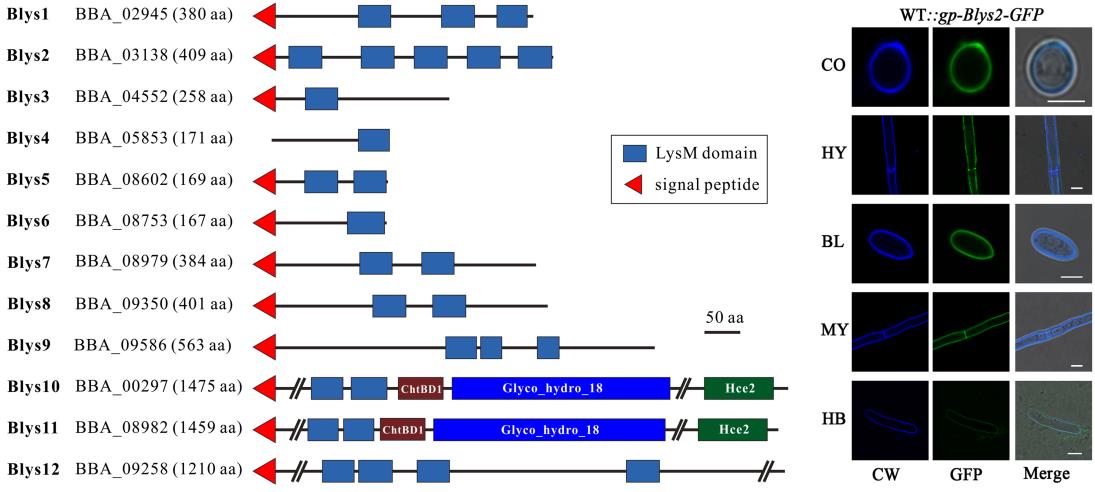Insect pathogenic fungi are of importance for both applied (insect-pest biocontrols) and basic research (fungus-animal interactions). In contrast to the advances in understanding fungus-plant interactions, research on molecular pathogenesis of entomopathogenic fungi seems rather limited. In particular, the machinery of effector-mediated inhibition of host immunity has not been well established and even questioned in fungus-insect interactions.
Prof. WANG Chengshu’s group at the Shanghai Institute of Plant and Physiology and Ecology, Chinese Academy of Sciences has recently finished the genomics studies of different insect pathogenic fungi and revealed the similar presence of effector-like proteins in the genomes of different entomopathogenic fungi.
In their study, the LysM effectors have been characterized as virulence factors in plant pathogens to suppress chitin-triggered immunity in plants. Also, varied numbers of LysM protein are present in the genomes of insect pathogens. By using the insect pathogen Beauveria bassiana as a model, Prof. WANG’s group performed bioinformatic analysis, gene expression, gene deletion and complementation, and insect bioassays. They found that the fungus grown in different nutrient conditions can, in different forms, transcribe 12 B. bassiana encoded LysM protein genes (Blys1-Blys12), among which six of them were expressed by the fungus growing in insect hemocoels.
Further gene deletion and insect bioassays revealed that, for full fungal virulence against insect hosts, two of these six genes, i.e., Blys2 and Blys5, are required. To their surprise, complementation with the divergent Slp1 effector from the plant pathogen Magnaporthe oryzae could fully regenerate the virulence defects of the Blys2 and Blys5 null mutants of B. bassiana against insect hosts. Both Blys2 and Blys5 can bind chitin to deregulate insect immune responses; in addition, Blys5 can protect fungal cells from chitinase hydrolysis.
The new findings, apart from expanding our understanding of LysM protein evolution, help establish the effector machinery similarly occurring during fungus-animal interactions.
This work entitled “Divergent LysM effectors contribute to the virulence of Beauveria bassiana by evasion of insect immune defenses” has been published online in PLoS Pathogens on September 5, 2017. The work was funded by the Strategic Priority Research Program of Chinese Academy of Sciences and the National Key R&D program.

Caption:
Left panel, schematic structures of twelve LysM proteins encoded by Beauveria bassiana;
Right panel, cell-wall chitin targeting by GFP-labeled Blys2 in different type of cells.
Author contact:
Dr. WANG Chengshu, Principal Investigator
CAS Key Laboratory of Insect Developmental and Evolutionary Biology
Shanghai Institute of Plant Physiology and Ecology
Chinese Academy of Sciences
300 Fenglin Road
Shanghai 200032
Phone: (86) 21- 54924157
Email: cswang@sibs.ac.cn

